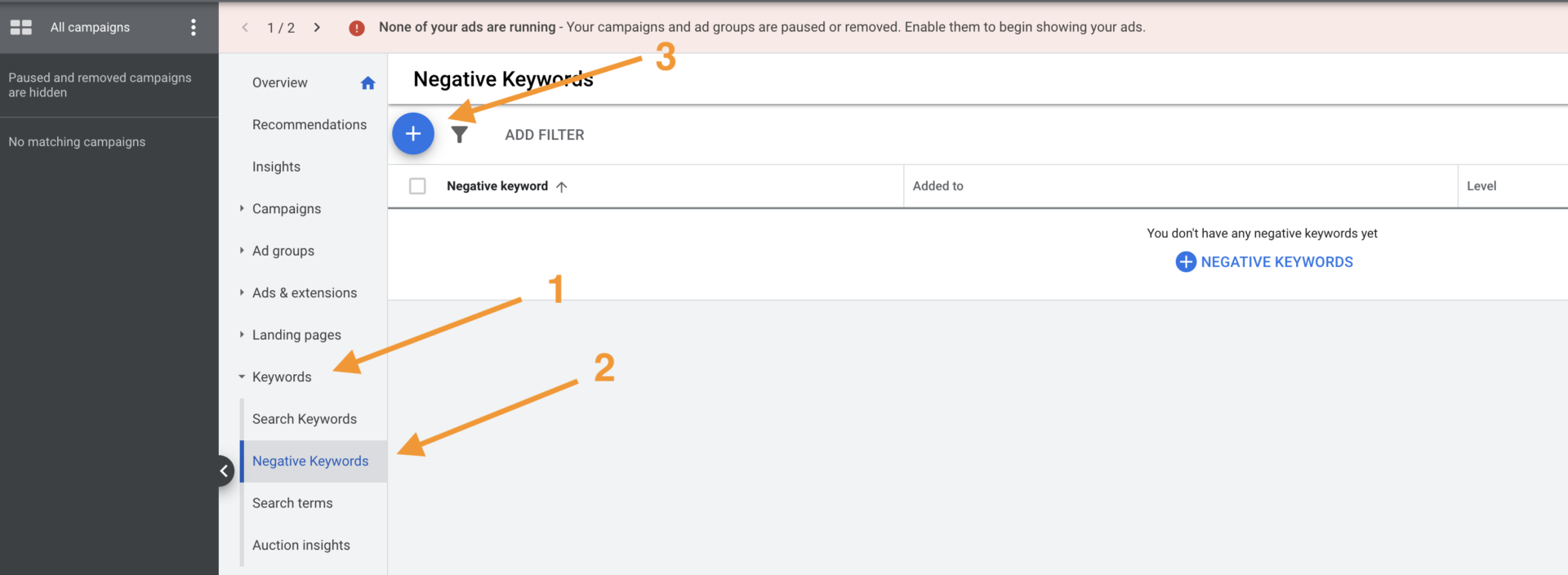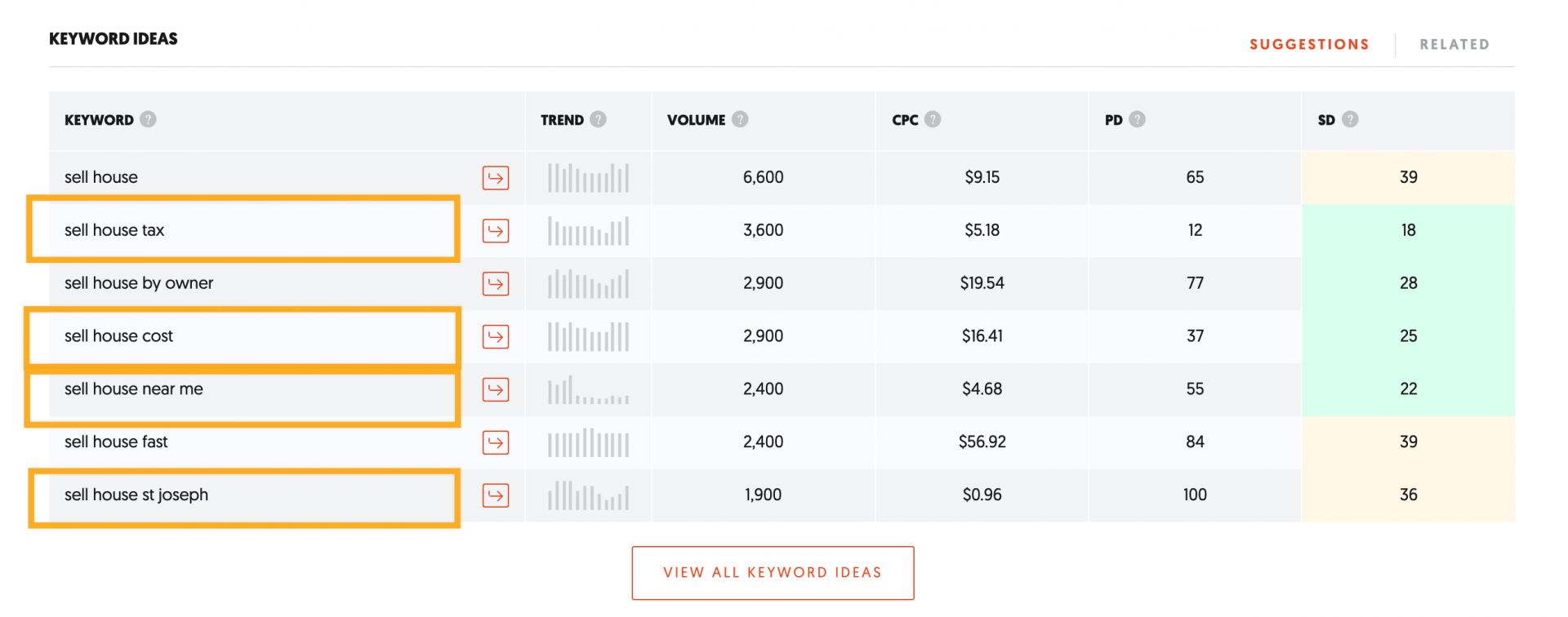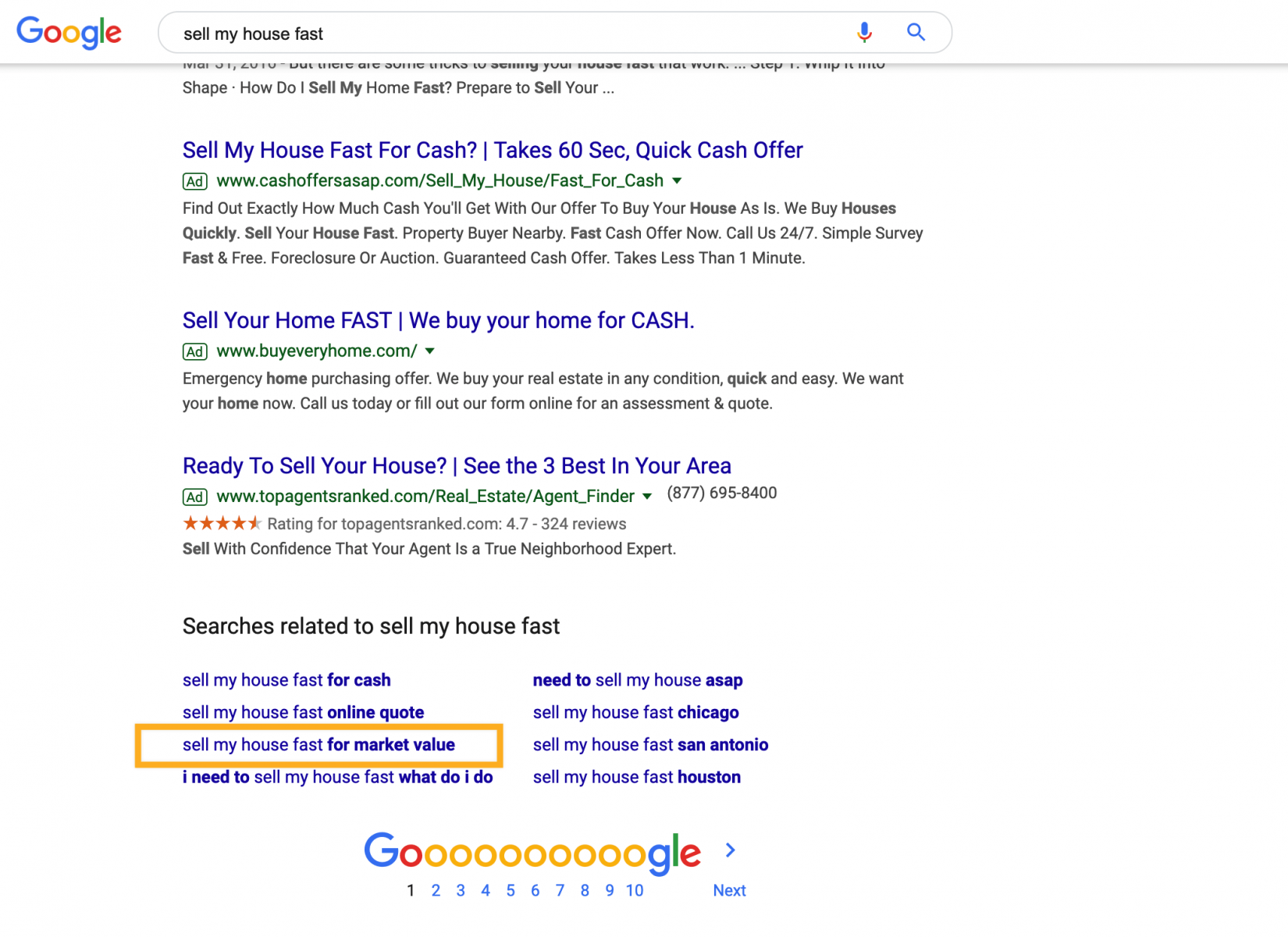
No one likes to waste money! Negative keywords are one of the most underutilized tools PPC advertisers have at their fingertips. They can help you save a budget for the best quality searches when used correctly.
We want you to hit the ground running with your campaign quality, so we’ve added 100 negative keywords you can include in your PPC accounts. It will keep your keep ads from showing for words such as “gta” and “paint,” which are sure to accompany some keywords you’re bidding on.
⬇️ Grab a FREE Negative Keyword List for Motivated Sellers ⬇️
Let’s say you’re an investor who’s creating your first Google Ads campaign. You’d like to show up on searches to sell a house. Although, it can be a mistake to advertise for a broad term. Here’s what can happen:
Advertiser bids on “sell home” and a searcher comes along and types in “sell home furniture,” looking at the many options to sell their home furniture.
Your ad featuring an option to sell their home fast for cash shows.
The searcher accidentally clicks your ad, driving up your bill, without any intention of selling you their house.
This is a fairly common example. As you’ll discover, from video games to furniture to spiritual statues, lots of search terms represent something that has nothing to do with selling a house fast.
What Are Negative Keywords for Real Estate & How Do They Appear In Google Ads?
Negative keywords give you an opportunity to block search terms that you don’t want your ad to be shown for. Let’s take a look at the common types of negative keywords that can be added:
- no notation at all indicates a broad match
- [brackets] represent a keyword in exact match
- “quotations” represent a keyword in phrase match
You can add these negative keywords at the campaign level & ad group level. Campaign level negatives mean those will not appear within an ad group for any keyword. Ad group level means you can set a particular negative keyword for a singular ad group. For the real estate industry, it’s best practice to add negative keywords at the campaign level.
Let’s take a look at how negative keywords are often used.
More of the traditional use of negative keywords works well for the real estate industry.
For example, if you’re looking to capture leads where people are searching looking to sell their house fast without an agent; then you’ll want to block searches for “sell a house with an agent” and “find an agent to sell my house” by adding “agent” to your negative keyword list.
*Tip* You should use Google’s search terms report to find new negative keywords. But, do beware that if you add keywords using this method, Google defaults them as an exact match.
How to Build a Strong Negative Keyword List
First, if you have a Google or Bing rep, they should be able to help you build lists of negative keywords they use for similar accounts. But you’ll need to ensure these Google or Bing created lists aren’t taking away from your important search phrases.
Remember, reps know their products but probably don’t know the industry.
The same might be true if you’re having someone manage your account.
Next, as with planning any keyword list, you can explore Google Ads Keyword Planner and/or use the Google Suggestion method to see related terms and understand what you might want to weed out.
You’ll need to have a Google Ads account to use their tool. For Google Suggestions, search and look at the suggestions below the organic rankings. Here’s an example,
Another tool that we use for keyword suggestions is Ubersuggest. This tool is similar to the Google Ads tool, but you don’t need to be logged into your AdWords account to use it. It’s a good tool because it lets you type in a keyword phrase and then groups variations on that keyword into organized segments, like this:
Sell house
As you can see, I’ve highlighted in orange some potential negative keywords for a business looking for motivated sellers.
Without using this tool, you might have known that “sell house tax” is a popular search. Now you can turn “tax” into a negative keyword to block any searches with the term “tax” within it.
Lastly, you should also use Google’s “related search” to id new negative keywords. This very effective method allows you to see what related search terms Google sees as popular. Then, you can remove the unrelated Here’s how it would look when performing a search for “sell my house fast”:
As you can see, you can add “market value” to your negative keyword list.
Using Negative Keywords With Microsoft (Bing) Ads
Bing Ads is a platform that we shouldn’t forget. We’ve researched to back up the effect that Bing can be a viable option for generating leads via PPC. So, negative keyword best practices should be included there too.
One difference between Microsoft (Bing) Ads and Google Ads is that you can only add phrase and exact match types for negative keywords.
If you’re importing a Google Ads account into Bing, just be aware that your broad match terms will be converted into phrase match.
As with Google Ads, you can add campaign and ad group level negative keywords. If you need further help, use Bing’s instructions on setting up negative keywords.
How to Add Negative Keywords
Add individual negative keywords to ad groups or campaigns
Step 1: Select Keywords and Targeting > Keywords, Negative.
Step 2: Click add negative keywords and select Ad group negative or Campaign negative keywords.

Step 3: If prompted, select the destination for the new negative keyword and click OK.
Step 4: Enter the negative keyword in the edit panel.
Add multiple negative keywords
It isn’t possible to add campaign and ad group negative keywords at the same time with the Make multiple changes tool. Choose to add either negative keywords or campaign negative keywords.
- Select Keywords and Targeting > Keywords, Negative.
- Click Make multiple changes.
- Select My data includes columns for campaigns and/or ad groups or Use selected destinations.
– If you select Use selected destinations, select Add as campaign-level negative keywords or Add as ad group-level negative keywords. - Type or paste your negative keywords in the grid.
- Click Process.
- The Make multiple changes tool will display the number of changes made. Click Finish and review changes.
- Review your pending changes. To add the pending changes to your account, click Keep. To undo your changes, click Reject.
Conclusion
Bidding on the highest-converting keywords in your market is only part of the battle. A solid set of negative keywords you’re continuously expanding upon helps tally victories. Google does a pretty good job filing through millions of ads to serve the right one to the right searcher at the right time. But there is still plenty of room for mistakes, so keep up on your negative keywords!
If you don’t like wasting your hard-earned money, negative keywords are one of the best ways to ensure you spend money on the right searches.


Thanks for this great list. I appreciate it.